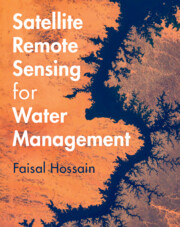Refine search
Actions for selected content:
712 results
3 - Incentive of Management
- from Part II - Management
-
- Book:
- Incentive Bargaining and Corporate Governance
- Published online:
- 12 December 2025
- Print publication:
- 08 January 2026, pp 89-114
-
- Chapter
- Export citation
10 - Listed Family Firms
- from Part IV - Types of Firms
-
- Book:
- Incentive Bargaining and Corporate Governance
- Published online:
- 12 December 2025
- Print publication:
- 08 January 2026, pp 299-318
-
- Chapter
- Export citation
Introduction
-
- Book:
- Incentive Bargaining and Corporate Governance
- Published online:
- 12 December 2025
- Print publication:
- 08 January 2026, pp 1-24
-
- Chapter
- Export citation

Incentive Bargaining and Corporate Governance
- Comparative Enterprise Law among the US, Japan, and China
-
- Published online:
- 12 December 2025
- Print publication:
- 08 January 2026

Intracranial Abscess in Adults
-
- Published online:
- 12 December 2025
- Print publication:
- 22 January 2026
-
- Element
-
- You have access
- HTML
- Export citation
Chapter 1 - Dementia at the Bedside
- from Section 1 - Introductory Chapters on Dementia
-
-
- Book:
- The Behavioral Neurology of Dementia
- Published online:
- 17 November 2025
- Print publication:
- 11 December 2025, pp 1-8
-
- Chapter
- Export citation
From regional roots to global reach: A 30-year bibliometric analysis of the Journal of Management & Organization
-
- Journal:
- Journal of Management & Organization , First View
- Published online by Cambridge University Press:
- 03 December 2025, pp. 1-52
-
- Article
-
- You have access
- Open access
- HTML
- Export citation
Grass-Cast Southwest: A seasonal rangeland productivity forecast for the southwestern United States
-
- Journal:
- Cambridge Prisms: Drylands / Volume 2 / 2025
- Published online by Cambridge University Press:
- 28 November 2025, e16
-
- Article
-
- You have access
- Open access
- HTML
- Export citation
A Report on Knowledge: Written Reports from the Church of England, 1985–Present
-
- Journal:
- Journal of Anglican Studies , First View
- Published online by Cambridge University Press:
- 18 November 2025, pp. 1-23
-
- Article
- Export citation
9 - Internal Working Regime and Mining Subculture
- from Part II - The Coal Regime during the Boom Years and an Environment at Stake
-
- Book:
- Vietnam's Coal Frontier
- Published online:
- 25 October 2025
- Print publication:
- 13 November 2025, pp 254-284
-
- Chapter
- Export citation
7 - Coping with Water Supply and Water Quality Problems during Floods and Their Management
-
-
- Book:
- Impact of Urban Floods on Water Quality
- Published online:
- 23 October 2025
- Print publication:
- 06 November 2025, pp 95-102
-
- Chapter
- Export citation
Chapter 8 - Neurodevelopmental Disorders in Children and Young People
-
-
- Book:
- Seminars in Child and Adolescent Psychiatry
- Published online:
- 10 October 2025
- Print publication:
- 30 October 2025, pp 113-129
-
- Chapter
- Export citation
Arrhythmia rate and management in children presenting to the paediatric emergency department due to palpitation
-
- Journal:
- Cardiology in the Young / Volume 35 / Issue 11 / November 2025
- Published online by Cambridge University Press:
- 16 October 2025, pp. 2241-2247
-
- Article
- Export citation

Satellite Remote Sensing for Water Management
-
- Published online:
- 10 October 2025
- Print publication:
- 04 September 2025
-
- Textbook
- Export citation
Simulating herbage and soil organic carbon under Urochloa hybrid cv. Cayman in Tanzania using the Decision Support System for Agrotechnology Transfer CROPGRO-Perennial Forage Model
-
- Journal:
- Experimental Agriculture / Volume 61 / 2025
- Published online by Cambridge University Press:
- 30 September 2025, e28
-
- Article
-
- You have access
- Open access
- HTML
- Export citation
Case 42: - Rapid Eye Movement Sleep Behaviour Disorder
- from Part 1: - Vignettes
-
- Book:
- Practise Psychiatry
- Published online:
- 04 September 2025
- Print publication:
- 18 September 2025, pp 360-364
-
- Chapter
- Export citation
Case 24: - Autism Spectrum Disorder and Intellectual Developmental Disorder
- from Part 1: - Vignettes
-
- Book:
- Practise Psychiatry
- Published online:
- 04 September 2025
- Print publication:
- 18 September 2025, pp 234-246
-
- Chapter
- Export citation
Case 13: - Trichotillomania and Excoriation Disorder
- from Part 1: - Vignettes
-
- Book:
- Practise Psychiatry
- Published online:
- 04 September 2025
- Print publication:
- 18 September 2025, pp 127-131
-
- Chapter
- Export citation
Case 12: - Body Dysmorphic Disorder
- from Part 1: - Vignettes
-
- Book:
- Practise Psychiatry
- Published online:
- 04 September 2025
- Print publication:
- 18 September 2025, pp 121-126
-
- Chapter
- Export citation
Case 14: - Hoarding Disorder
- from Part 1: - Vignettes
-
- Book:
- Practise Psychiatry
- Published online:
- 04 September 2025
- Print publication:
- 18 September 2025, pp 132-137
-
- Chapter
- Export citation
